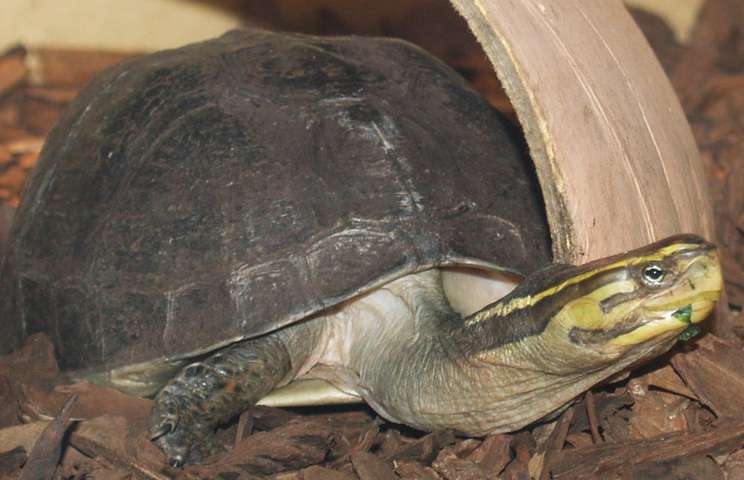
One of the smallest subspecies, the Cagle’s Map turtle is restricted to the rivers of Texas. It bears the name of Dr. Fred Ray Cagle, a herpetologist. It can be found throughout the majority of the counties south of the Guadalupe River, including the areas near the San Antonio and San Marcos rivers.
Cagle’s Map turtles have dark shells with pointed keels and serrated rears, just like other Map turtles do. The Cagle’s Map turtle has distinct contour lines on its shell, and the stripes on its head range in color from cream to yellow. The omnivorous Cagle’s Map turtle occasionally consumes plants, mollusks, and insects.
Life Span
Male captives can survive for 14 years or longer, according to the longest life spans yet observed. The species is threatened in the wild. The loss of their habitat has a significant impact on their life span. The size of the range has decreased by between 1/2 and 2/3 since 1974.
Predators
These map turtles are sensitive to disruption from people. Through reservoir building and human influence, their habitats are vulnerable to destruction. For the thrill of the kill, some individuals chase them. Some people gather them for their own use or for commerce. Their population is declining because of water pollution as well.
Care as a Pet

Housing
The species is present in the country, notably along the Texas waterways (Guadalupe rivers and San Antonio drainage systems). Additionally, you can see them in the extensive Mississippi River and river basin. Muddy rivers, lakes, and streams are preferred habitats for the Graptemys caglei. They enjoy the mild to erratic currents found in the Guadalupe rivers’ habitat. They thrive in environments with limestone, silt, or sand riverbeds. They settle in areas that are open and receive plenty of sunlight.
Feed
Female Cagle’s map turtle adults eat mollusks, whereas juveniles, hatchlings, and adults all consume insects. Both consume plants, including algae, grass, and even bark. These pets are not picky eaters when kept in captivity. You can feed them cichlid sticks, worms, or crickets. You can also give them your own homegrown leafy vegetables, or if you want, you can buy Tetra Reptomin floating food sticks.
Table





